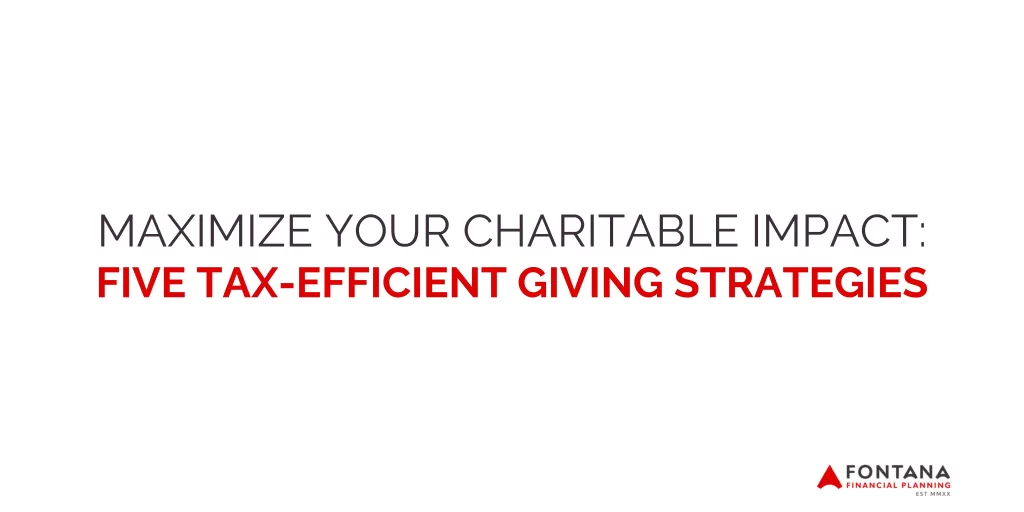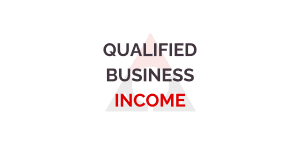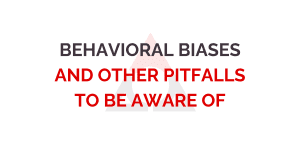While the primary motivation for charitable giving is to make a positive impact, savvy investors understand that the tax benefits of such contributions should not be overlooked. In this article, we will explore five strategies that enable you to give more efficiently from a tax perspective.
1. Gift Appreciated Stock
When making charitable contributions, consider gifting appreciated stock instead of cash. This approach allows you to claim an itemized deduction for the charitable gift while also avoiding capital gains taxes on the stock. The charity receives the donated security, and as a tax-exempt organization, they can sell it without incurring taxes.
However, keep in mind the limits on the amount of appreciated stock you can gift relative to your income in a given year. In 2023, the deduction limit for gifts of appreciated stock is 30% of your Adjusted Gross Income (AGI), with any excess carried forward for future deductions. Additionally, ensure that the gifted stock has been held for over one year to qualify for the full deduction.
Example: John, in the 32% marginal tax bracket, donates appreciated ABC Co. stock worth $50,000 with a $10,000 basis, held for over a year. He receives a tax deduction of approximately $16,000 and avoids capital gains taxes of up to $11,900, resulting in total tax savings of $27,900. He can then reinvest in ABC Co. stock with a new basis of $50,000.
2. Utilize a Donor Advised Fund
For families looking to maximize their charitable deductions or establish an endowed giving strategy, a donor advised fund can be an effective tool. These funds, recognized as 501(c)(3) charities by the IRS, allow you to donate cash or appreciated securities, claim a deduction in the year of the gift, and enjoy tax-free growth on the donated funds until they are distributed to the specified charities.
Consider a scenario where a family wishes to donate $5,000 annually to a chosen cause indefinitely. They contribute $100,000 of ABC Co. stock with a $10,000 basis to their donor advised fund, obtaining a charitable deduction and avoiding capital gains taxes. The funds are invested and gradually distributed to their chosen charity, ensuring ongoing support.
3. Bunch Your Gifting
If you anticipate that you’ll be near the threshold for itemizing deductions or in a higher-than-usual tax bracket for a particular year, consider “bunching” your charitable giving into that year. By doing so, you can maximize your tax savings.
For instance, if you’re a married couple and the threshold for itemizing in 2023 is $27,700, and your planned giving may not exceed this threshold in a single year, you can bunch two or three years of donations into one. Use a donor advised fund to manage these funds until they are disbursed to your chosen charities.
Example: John has $20,000 in itemized deductions, including his annual $10,000 charitable giving. To reach the itemized threshold, he gifts three years’ worth of donations ($30,000) to a donor advised fund. This elevates his itemized deductions for the year to $40,000, providing significant tax benefits. In the following two years, he opts for the standard deduction, optimizing his multi-year tax situation.
This strategy is also valuable during high-income years, such as during a liquidity event or a significant increase in income. By bunching your charitable giving in such years, you can benefit from higher tax deductions.
4. Make a Qualified Charitable Distribution (QCD)
If you are over the age of 70.5, consider making charitable contributions directly from your IRA account as a Qualified Charitable Distribution (QCD). These distributions are not considered taxable income, ensuring you receive a tax deduction for your giving, regardless of whether you itemize your taxes.
You can donate up to $100,000 in QCDs annually, and they do not count towards income for Medicare surcharge calculations. Moreover, for individuals over the age of 73, these distributions count toward your Required Minimum Distribution (RMD).
Example: John, aged 73, has an RMD of $20,000 for the year. He plans to take the standard deduction as his only deduction is his planned charitable giving of $20,000. To maximize his tax benefits, he gifts $20,000 directly from his IRA as a QCD, receiving a tax break on top of the standard deduction. This also satisfies his RMD, eliminating the need for additional withdrawals from his IRA.
5. Utilize Employer Match
Many companies offer employer matching on charitable contributions, yet a significant amount of these matching funds goes unclaimed each year. If you are making charitable donations, check if your employer provides matching funds.
Ensure you understand your employer’s matching policies and requirements, as not following the necessary steps can lead to missed opportunities for additional charitable funds.
In conclusion, these five tax-efficient giving strategies can help you make the most of your charitable contributions while minimizing your tax liability. Remember to consult with a tax professional to tailor these strategies to your specific financial situation and philanthropic goals.
Disclosure: Neither Raymond James Financial Services nor any Raymond James Financial Advisor renders advice on tax issues, these matters should be discussed with the appropriate professional.
Opinions expressed in the are those of the author and are not necessarily those of Raymond James. All opinions are as of this date and are subject to change without notice. The information has been obtained from sources considered to be reliable, but we do not guarantee that the foregoing material is accurate or complete.
Matching contributions from your employer may be subject to a vesting schedule. Please consult with your financial advisor for more information.
RMD’s are generally subject to federal income tax and may be subject to state taxes. Consult your tax advisor to assess your situation.
Donors are urged to consult their attorneys, accountants or tax advisors with respect to questions relating to the deductibility of various types of contributions to a Donor-Advised Fund for federal and state tax purposes. To learn more about the potential risks and benefits of Donor Advised Funds, please contact us.




